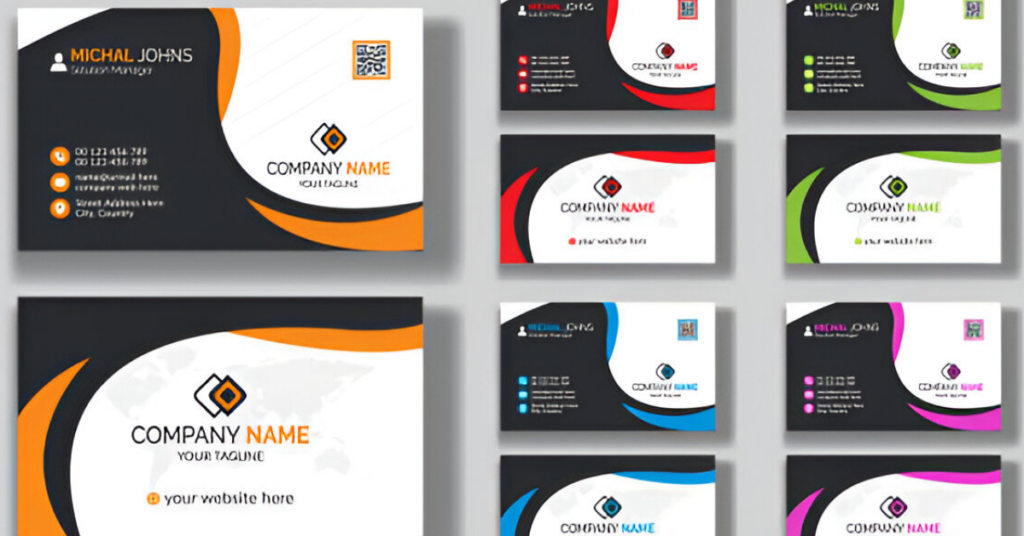The term “brand” refers to more than just a catchphrase or business style. It is the collective image and feeling of a company that follows it wherever it goes. A strong brand will help the company achieve new levels of success if it is built properly. Nevertheless, if your brand is built improperly, it may scare off customers and make it difficult to turn a profit.
It is therefore important to develop a solid marketing strategy and to master the management of your brand: what are the requirements for the branding process, and what effect does your brand image have on the customer experience?
This article will cover in detail how to start out a brand from scratch and strategies for new entrepreneurs at the beginning of their journeys.
What is Branding?
A company’s brand is one of the most important aspects of its business, whether it is large or small, retail or B2B. Effective brand strategies provide a significant advantage in increasingly challenging markets. What exactly does the term “branding” mean? What impact does it have on a small business like yours?
Branding is simply the promise you make to your customers. It indicates to your customers what you offer in terms of products and services and how you differ from your competitors. Ultimately, your brand is determined by who you are, what you want to be, and what others think of you.
As Paul Rand said: Design is the silent ambassador of your brand.
Color, layout, and font are all design elements that contribute to representing a brand positively and making it stand out from the competition.
What is Brand Strategy & Equity?
An organization’s brand equity is its value as a brand. It is based on the principle that a recognized brand that has a long and reliable reputation is more likely to succeed than its similar competitor.
In order to create a strong brand equity, you must consistently brand your company’s products and services in a way that makes them more valuable than identical products of the competitors. A good example of this is Coke and a generic soda. Coca-Cola’s brand equity is among the most valuable globally. In 2024, its brand value was estimated at $61.2 billion, reflecting a 5% year-over-year increase, according to Interbrand’s rankings. This places Coca-Cola as the 7th most valuable global brand.
Additionally, according to BrandZ by Kantar, Coca-Cola is the most valuable food and beverage brand. Its 2023 brand value is estimated at $98 billion, a 9% increase from the previous year. The brand’s consistent marketing strategies, such as the “Real Magic” campaign and innovation in product offerings, have helped maintain its strong equity.
In light of Coca-Cola’s strong brand equity, the company has the ability to demand a higher price that customers will gladly pay compared to what they’ll pay for some other cola.
10 Steps to Building a Brand
Branding goes beyond logos, slogans, and color schemes. It takes a lot of groundwork to create a successful brand before creating a website or developing marketing materials.
Here are 10 steps to follow for building a brand:
- Determine Your Target Audience
Having a target audience in mind is the first step in building a brand. Identifying this audience is essential when deciding on your brand-building strategy. Targeting an ineffective audience may make generating leads and converting followers more difficult.
The following factors may help you identify your target audience:
- The location
- Demographic and psychographic characteristics (hobbies, values, spending habits)
- Audiences and followers of competitors
- Problems or pain points your brand addresses
Targeting a broad audience may result in a lower level of relevance for consumers. Having a small but targeted niche audience is a great starting point for building all of your business’s assets and content, such as the logo, color palette, typography, imagery, etc.
- Take a Look at Your Competitors
You need to conduct competitive research in order to build your brand and establish yourself as the industry leader.
The importance of conducting good competitor research is vital to the success of your brand as it allows you to differentiate yourself. Although you are in the same industry, your brand may fill gaps that the competitors are not filling for consumers. Such as take the example of Nike vs. Adidas. Nike builds its branding around innovation, performance, and empowerment, while Adidas combines performance with lifestyle and fashion-focused products which something Nike doesn’t so both have their set of targeted audience who prefers them.
To identify and research competitors in your niche, follow these steps:
- Look up the category or industry of your product on Google
- Look for conversations on social media or Reddit. Use social media or Reddit to discover which brands are discussed the most in industry-related discussions
- Look for brands using hashtags on social media
Having identified similar brands, select a few for competitive analysis. In this way, you will have a better understanding of branding that works and that which does not. Rather than copy everything they do, you should use this analysis as inspiration for building your brand. In analyzing a competitor, it is important to consider the following factors:
- A brand’s assets, such as its logo, font, and colors. Are they effective?
- How does their brand voice sound? Can you tell if they are personable, professional, or humorous?
- What is the company’s marketing strategy? How do they establish their market presence?
- Do their website, and social media accounts on Facebook and Instagram, have regular updates?
- What are the online reviews of the company? What methods do they use for consumer engagement and how do they accomplish this?
- How does their brand appeal to you? Do you not like it?
SEMrush, for example, is one of the many competitor research tools available to online businesses. SEMrush is not only useful for analyzing your own website’s performance, but you can also use it for analyzing other websites.
- Make Your Brand Unique
Making your brand stand out can be challenging in a market with many similar brands. By researching your competitors and your target audience, you can begin to establish a brand that solves problems while standing out from the competition.
It is important to offer consumers something unique and different to ensure that they stay loyal to your brand. To establish your brand, you can create brand assets, promote it, describe it, or provide products and services. In order to remain relevant, you must remain unique.
- Decide What Your Brand Will Stand For
A brand’s focus is important to keep in mind when thinking about how to build one, especially when you are just getting started.
It will be frustrating to try to solve everyone’s problems, so focus on what you know you are best at. Your brand’s solutions are an excellent addition to your mission statement, homepage copy, and social media content. This can be viewed as an elevator speech designed to grab the attention of consumers.
Include the following organically in your statement:
- Products and services offered by your brand
- Target market – describe the type of person most likely to search for your product or service
- Your brand’s uniqueness
- How your brand solves a problem
To learn how to brand your business, you need to know what you do, why you do it, and for whom.
- Establish Your Brand’s Personality
The first step to building a brand is defining and identifying the brand’s personality. There is no reason why your brand cannot have a personality just because it is not a person. The development of a brand’s personality is extremely important. This adds a personal touch to your brand.
You can use mascots to make your brand personality and create relevance. They serve as a symbol of your brand and make it more approachable. For example KFC’s Colonel Sanders represents tradition, hospitality, and Southern comfort, reinforcing the brand’s identity as a family-friendly fast-food chain and Michelin’s Bibendum (Michelin Man) conveys reliability and trustworthiness, symbolizing their expertise in tires and safe driving.
Develop your content marketing strategy in a way that it reflects your understanding of the emotions your target audience is experiencing when seeking solutions.
It may be helpful for you to write out your story to gain an understanding of how it can be related to your audience. It may have been that you began your brand because you experienced similar problems or feelings, or that your brand is relevant to a certain demographic.
- Choosing a Brand Name
Branding yourself on social networking sites, the internet, or in advertisements relies heavily on your brand name. This is often the first thing a consumer sees or hears and it has the potential to make or break their impression. It is obvious that you wish to leave a lasting impression.
The name you choose will impact your logo, your branding, your trademark, your graphics designs, and your digital presence as a whole. A company’s name must be distinctive and easily recognizable. It is recommended that you keep your company’s name broad if you intend to expand your products or services in the future.
Consider coming up with your own name, using a suggestive word, combining two words, or even using an acronym. When choosing a name for your company, make sure that it is unique and reflects your brand, especially before you set up a website domain.
- Choose the Colors and Fonts of Your Brand
Your website and other brand materials will be impacted by the colors and fonts you use, and they will also evoke certain reactions from your audience. Understanding some of the consumer’s buying patterns, especially concerning colors, may be helpful. One study shows 62 to 90% of brand assessments are based solely on color.
Colors allow you to express more than just your brand’s identity. Your colors should make you stand out from your competitors and be unique.
There are different feelings associated with different colors. Here’s a short guide about the feelings each color evokes:
Fonts should also be considered along with color. Decide on one or two fonts from the multitude of fonts available. The font used for your logo, headings, and body text may differ; however, whatever font you choose, ensure it is consistent and easy to read.
After creating brand assets, you may want to develop a brand style guide so that all levels of your organization know how to communicate effectively.
- Come up With a Brand Slogan
Slogans or taglines are unnecessary, but they can serve as useful assets to help communicate your brand’s identity more consistently. You may upload it to your social media accounts, your website, or to your business cards.
It is possible for a slogan to change over time, unlike your brand name. Your slogan can be changed as you begin to consider the future of marketing. It is estimated that Pepsi has used more than 30 slogans throughout its history.
It is not necessary to follow a specific format when writing a slogan. When creating your own, you should keep the following points in mind:
- Make your slogan metaphorical – like Red Bull’s slogan “Red Bull gives you wings“.
- Give a brief description of your brand, like “Beanz Meanz Heinz” which is slogan of Heinz.
- You can make slogan like a claim, like, Death Wish Coffee’s slogan “World’s Strongest Coffee“.
- Consider using labels as slogans, such as Cards Against Humanity’s slogan is “A party game for horrible people“.
- Make your slogan rhyme, such as Folgers Coffee’s slogan “The best part of waking up is Folgers in your cup“.
Slogans are usually remembered by your customers. They serve as an excellent means of establishing and reinforcing your brand’s voice. You can use slogans in your marketing campaigns to influence memory in your target audience.
- Design a Logo
The logo of your brand will be displayed everywhere. A company’s logo functions as its face, and is an integral part of the branding process.
A logo should be as distinctive and memorable as your brand’s name and slogan. It is important not to choose a logo that could be mistaken for that of another brand, especially one of your competitors. You will also need to be able to scale the logo to different sizes, as it will be used across a variety of media.
Consider the following when designing your logo:
- Website pages
- Browser tab favicons
- Your social media profile
- A print advertisement
- Business cards
For your logo to work across different applications, you may need to create several versions. If your logo is a text image, it will be difficult to read when used as a favicon or social avatar. Consider simplifying your logo to function as a square or circle.
Types of logos
In modern branding, wordmarks, lettermarks, and other letter-based logos are the most commonly used. You may, however, prefer another style, depending on your goals and aesthetic preferences. There are several types of logos, including:
- Abstract logos. Unlike traditional logos, abstract logos combine shapes and colors that don’t have any direct connection to anything real. To build brand recognition, you should pair these with a wordmark as a secondary logo.
- Mascot logos. Mascot logos represent real people or characters that represent your brand. By creating a relatable personality for your business, they can humanize it. KFC, Wendy’s, and Colonel Sanders are all examples of brands that can benefit from this (e.g., Wendy’s, KFC).
- Emblem logos. The emblem logo combines text and an emblem to create a luxurious brand identity. You should avoid making them too complicated or they will be impossible to scale.
- Wordmarks. The wordmark, or lettermark, is the type-based logo of your business. It may be your entire company name, an initial, or a letter combination.
- Make the Most of Social Media
A brand cannot be built without social media, that is a simple fact. It is simply not possible to ignore social media in today’s world. Over 3 billion people use Facebook globally, representing almost a third of the world’s population.
To maximize the power of social media, you must create consistent content that reflects your brand personality and messaging. Social media makes consumers feel they are interacting with a person rather than a large corporation.
It is also important to consider the frequency with which you post content. Posting too frequently may create the impression that you are spamming your audience. Creating a content calendar that plans out all posts, including social media and blogging, is helpful.
Conclusion
These are simple steps to follow when building a brand from scratch. With careful planning, you can develop a brand that will ultimately benefit your business. Make sure your brand is ready to evolve with the industry in which you are operating. Take your time when developing your brand. Your brand may require updates based on market trends and trajectories after launch in order to remain competitive and current.


